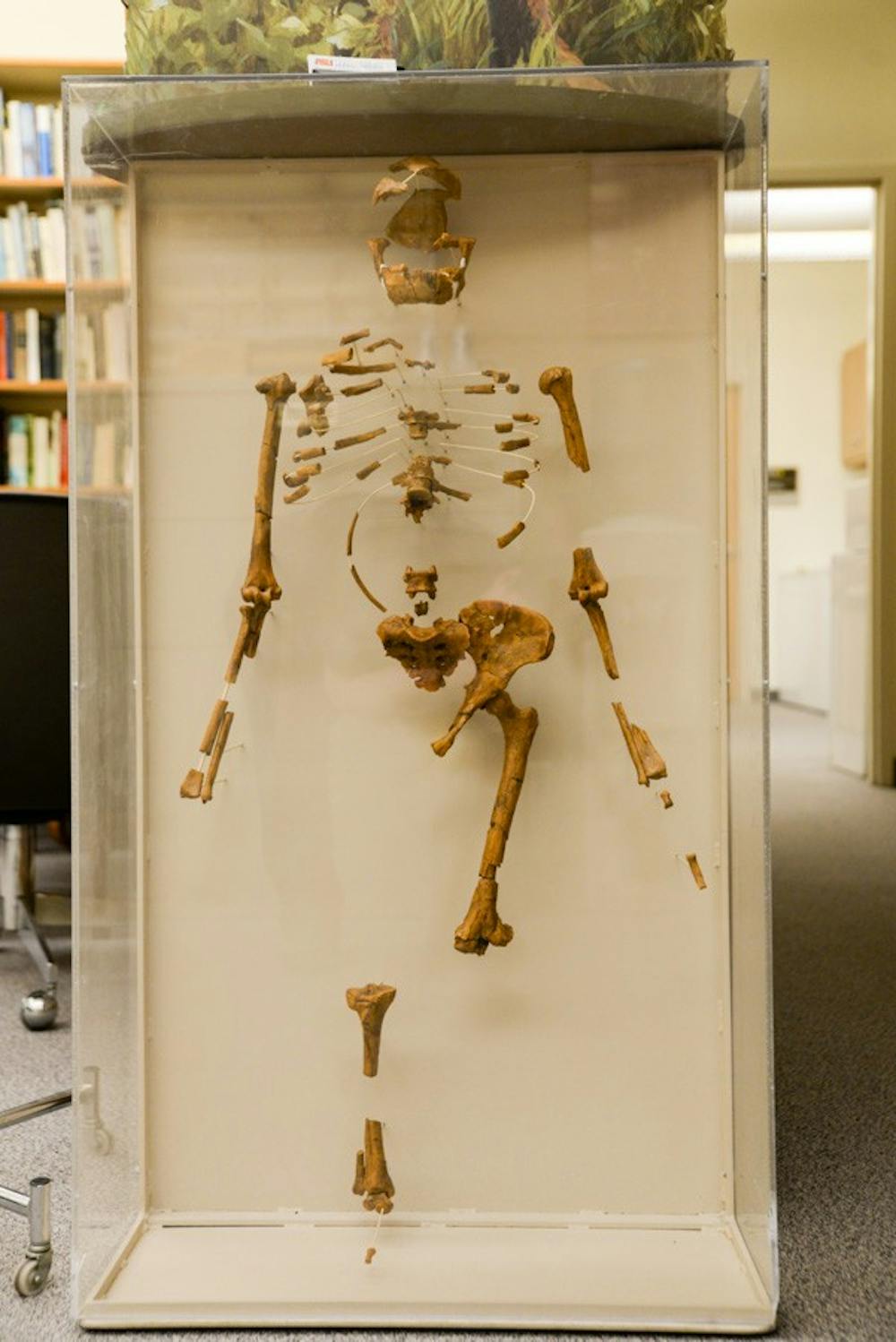When anthropologist Donald Johanson joined Tom Gray to explore a dig site in Hadar, Ethiopia, on Nov. 24, 1974, they made a historic discovery.
What was discovered in the excavation that day led to one of the biggest impacts in the field of paleoanthropology — a partial skeleton of a human ancestor that walked upright, whom they called “Lucy."
Forty years later, Johanson will be speaking at at a free lecture at the Tempe Center for the Arts on Feb. 12 at 7 p.m. on the discovery of Lucy. A pre-event reception held from 5:30 p.m. to 6:30 p.m. is priced at $30.
“Lucy shocked the world in the '70s when she was announced, and I anticipate Don telling everyone how new studies of her bones (and) the site where she was found …are still shaking up the family tree,” associate professor Gary Schwartz said.
Lucy's impact was, and still is, huge, Schwartz said. Because there was little known about the ancestry of humans at the time, the discovery of Lucy pushed back the story of human origins over millions of years, he said.
After hours of scouring in the desert, Johanson spotted a hominid elbow bone protruding from the dirt, as well as pieces of thigh bone, vertebrae and ribs — all belonging to the same skeleton.
 A cast of the fossils of "Lucy" are on display in the
A cast of the fossils of "Lucy" are on display in the Anthropology Department offices in the Social Sciences
building on the Tempe campus. (J. Bauer-Leffler/The State
Press)
The fossil, eventually named Lucy after “Lucy in the Sky with Diamonds” from the Beatles’ Sgt. Pepper’s Lonely Hearts Club Band album. It turned out to be 3.2 million years old, weighing approximately 60 pounds at less than 4 feet. It was the first skeleton of that time to be discovered so intact, with 40 percent of the fossil still preserved.
“This was something I had dreamt about since I was in high school, actually — going to Africa and finding something important related to human evolution,” Johanson said.
Johanson presented his findings in the spring of 1975, at a professional meeting of anthropologists. The announcement of Lucy drew immediate attention worldwide, from both anthropologists, who were “rightfully excited,” and the public, Johanson said.
“I knew it had an impact because it was a partial skeleton but frankly speaking, I didn’t realize it would be as earthshaking for anthropologists and so profoundly catch the public’s eye,” he said.
Lucy, or Australopithecus afarensis, is an ancestor of the genus Homo, which includes Homo sapiens, and lasted for at least 800,000 years, Johanson said. The species was “very successful,” compared to Homo sapiens, who have been around for only 200,000 years, he said. Afarensis was widespread, living in diverse environments including Tanzania, Kenya, Ethiopia and North Central Africa, he added.
Much like chimpanzees, afarensis lived in small groups and had small brains. Johanson compared the brain size of Lucy’s species to the size of an average cup of coffee. However, what was most unique about afarensis was that they walked fully upright, Johanson said. Evidence for how Lucy walked refers to her leg bones and their joints, according to the background of University of Liverpool research on upright walking, which included simulations of Lucy.
Johanson and Tim White, U.C. Berkeley anthropologist, began to study Lucy’s skeleton in 1976, hoping to place her on the family tree. The duo compared her anatomy with other species of Australopithecus and went on research trips to Eastern and Southern Africa to look at the original fossils and make casts of Lucy, Johanson said. Two years later, the two succeeded and classified Lucy as “Australopithecus afarensis,” named after the Afar triangle where she was found.
“We realized that she was significantly different from other species, meaning that she deserved a new species name,” Johanson said.
The announcement was controversial in the anthropological community, since not only a new species was named but also humankind’s family tree was significantly altered, Johanson added. Some species that had been on the main branches of the tree were put onto a side branch, for example. It took time for other anthropologists to study the new species and make their own evaluations in order to feel comfortable with the new suggestions, Johanson said.
Lucy is now housed at the National Museum of Ethiopia.
“I feel very strongly that all discoveries should be kept in the countries of discovery,” Johanson said.
The Institute of Human Origins have been planning the event since the summer of 2014, Julie Russ, assistant director of Communications and External Relations at the Institute of Human Origins, said. The Institute of Human Origins’ formation was sparked by the discovery of Lucy, according to the IHO website.
“We are looking forward to Dr. Johanson speaking here in Tempe, because he has not given a public lecture in the Phoenix area in several years,” she said.
Reach the reporter at jenny.ung@asu.edu or follow @Jenny__Ung on Twitter.
Like The State Press on Facebook and follow @statepress on Twitter.




